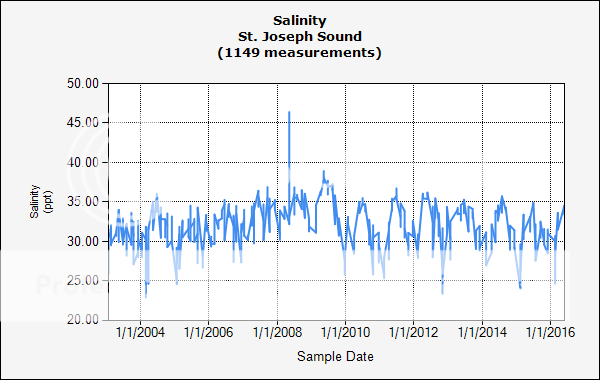Okay I found it.... "Hi Jeff and thank you for that amazing article. You really got people thinking outside of the box on this and my hat is off to you sir! We seam to be conditioned that ASW is better than NSW but how can that be true, and why are we made to believe that?
I hope maybe I can shed a little further insight to this. My name is Tom I am a marine biologist with Atlantic Reef Conservation https:ARCreef.com (ARC Reef on social media) We are a state and federally certified aquaculture facility located in Miami, FL. (close to many of you guys). We do much Off-shore, Near-Shore and Inland water testing, reef conservation, creating artificail reefs, and A LOT of data collection. Here is a comparison of our last test dated April 4th. 2016.
Sample 1 will be called NSW (Nearshore Water) it was taken in Biscayne bay, 1 mile north of the Miami River, on the inland side of the bay 7 ft from a seawall, at a depth of 3 ft. from the surface.
Sample 2 will be called OSW (Offshore Water) it was taken 3.75 miles off shore from key Biscayne lighthouse in Miami, at a depth of 3 ft. from the surface.
Salinity: NSW 1.026/34PPT OSW 1.027/36PPT
Phosphates: NSW 0.006 PPM OSW 0.005 PPM
Alkalinity: NSW 139 PPM OSW 131 PPM
Iodine: NSW 0.3 PPM OSW 0.3 PPM
Nitrate: NSW <0.1 PPM OSW <0.1 PPM
Nitrite: NSW <0.1 PPM OSW <0.1 PPM
Ammonia: NSW <0.1 PPM OSW <0.1 PPM
PH: NSW 8.175 OSW 8.25
Calcium: NSW 380 PPM OSW 400 PPM
Conclusion:
NSW is a great viable option if you are located near an ocean, If not then ASW is an excellent alternative to NSW, and both are probably at better levels that whats in your closed system right now. In our tests it is evident that water taken near shore or within a closer proximity to rivers or sewer run off you will have very slightly lower salinity, PH, and Calcium levels, but well within range. Salinity in most major bodies of water can range from 1.024/32 PPT to 1.028/37.5 PPT, Alkalinity, PH, and other perimeters will differ but only slightly, and not enough to make a difference. So really anywhere in the world, if you live near the ocean, you're pretty much good to go. My only suggestion is to test for nitrates and phosphates if you live downstream from farmland as the fertilizers they use are almost straight nitrogen, if that seeps out to rivers it can escalate those levels, and my second suggestion is to just take your water at high tide if you can.
Hope this helps a little. We test for more perimeters but I just posted up what I thought people would be most interested in. Most other tests were only marginally different or involved fecal coliform, which I don't think most people would be too interested in lol. Cheers and happy reefing everyone! Looking forward to your next article."

